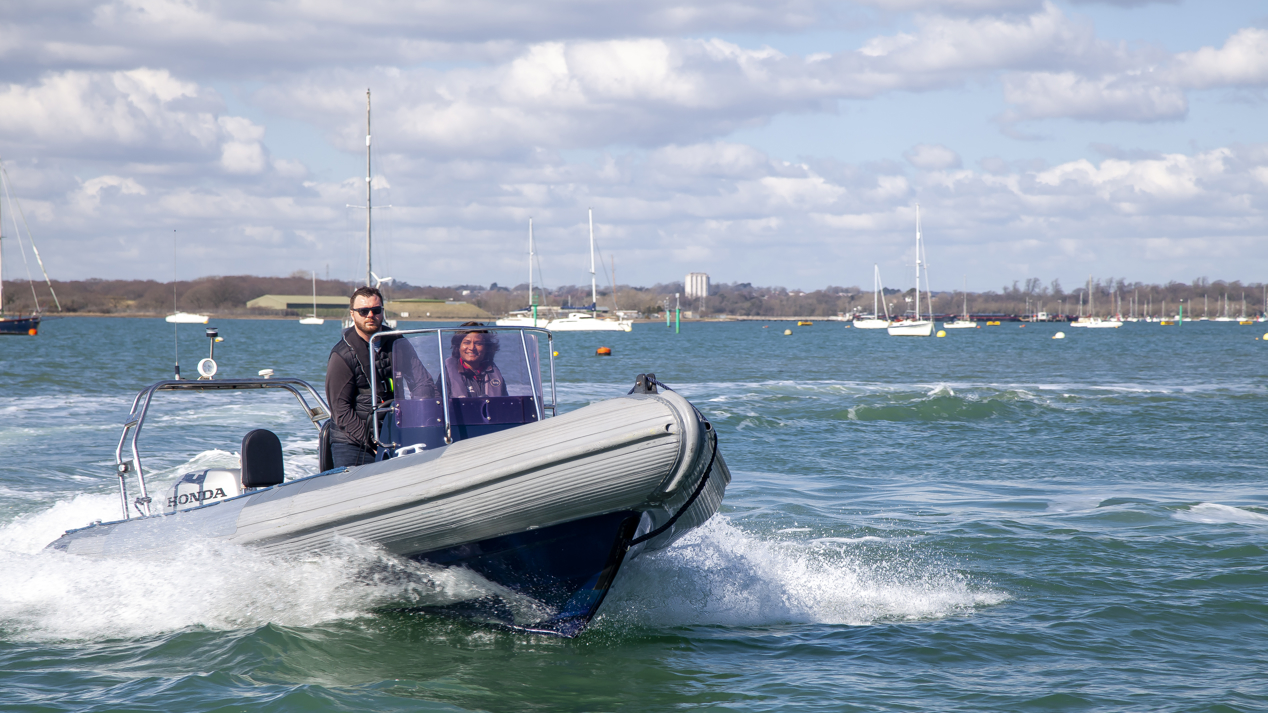Sailing concussion: pathway to recovery
Full recovery from a concussion is essential before you return to regular or competitive sailing
Importance of recovery
In almost every case of concussion, with time and rest, you will return to full health with no adverse side effects. However, it is vital that you do not rush your recovery or try to ignore your symptoms while sailing.
The pathway to recovery follows a series of stages, where physical and cognitive progression is achieved over time. These stages make up a return to sail protocol, guiding your safe return to normal sailing or competition over 21 days.
The pathway to recovery
Stage 1
Total rest (day 0 - 2)
The first 24 - 48 hours post injury are the most important to ensure a fast and complete recovery from your concussion.
During this time, a period of total rest should be observed. This includes taking a break from work or school or from partaking in any form of physical activity more strenuous than a short walk. Total rest will allow your brain time to begin healing.
Stage 2
Relative rest/normal daily activities (day 2 - 6)
Following the first 48 hours post injury, days 2-6 should include relative rest with the gradual reintroduction of normal activities outside of school or work. For example, cooking and reading.
However, try to limit screen time to short intervals of around 10-15 minutes, as extended screen use can make your symptoms worse.
You can also begin reintroducing light physical activity, such as, cleaning, short walks, and simple house chores.
Stage 3
Relative rest/reintroducing work or school (day 7 - 9)
Between days 7-9 you can start reintroducing work or school tasks. These should be carried out in short 20-30 minute intervals and followed by a 10 minute break.
During this time, physical activity can also be increased. Try a 15-minute brisk walk, bodyweight training session, or stationary cycle.
Do not return to intense physical activity too quickly and avoid added resistance training as this can worsen your symptoms.
Stage 4
Relative rest - full return to work or school (day 10 - 14)
During days 10-14, the priority is safely returning to work or school with reduced or adjusted timetables in place. This could include half days, more scheduled breaks, or remote working.
Try to reintegrate longer or more intensive physical activity sessions without returning to the water.
Again, avoid increasing the intensity of your physical activity sessions too quickly. However, try adding in more complex sessions/activities, where the risk of another head injury is low.
Stage 5
Return to sail protocol (day 15 - 21)
After two weeks of relative rest and progressing safely through the first 4 stages, you should return to work or school full time.
You can also return to the water following the return to sail protocol. However, medical approval is strongly advised from your GP.
The return to sail protocol has seven phases (from A-G). You can only progress to the next stage if you remain symptom free.
If your symptoms return, observe a period of relative rest until your symptoms subside and then restart the return to sail protocol.
|
Phase |
Day no. (post injury) |
Sailing session |
|
A |
15 |
Light winds (<F2). Simple reintroduction to sailing skills e.g. boat speed session. Try and minimise complex manoeuvres or situations which require cognitive demand. Maximum length 1 hour. |
|
B |
16 |
Light winds (<F3). A more complex reintroduction to sailing skills. Begin to increase the length of the sailing session. Maximum length 2 hours. |
|
C |
17 |
Light to moderate winds (F3). Begin to reintroduce cognitive load to the session e.g. boat handling sessions (Tacking/Gybing). Maximum length 1 hour. |
|
D |
18 |
Moderate winds (F3 - F4). More complex boat handling e.g. starting skills without other boats. Maximum length 2 hours. |
|
E |
19 |
Moderate winds (F3 - F4). Addition of other boats into starting session. Maximum length 3 hours. |
|
F |
20 |
Moderate winds (F3 - F4). Race scenario session e.g. half an upwind leg, leeward gate practice etc. Semi-limited session length. |
|
G |
21 |
Moderate/heavy winds. Final checks. Ensuring that you are symptom free and ready to go racing. Unlimited session length. |
Completing the return to sail protocol in seven consecutive days may not be logistically possible, in which case spread it out over multiple days.
If spreading the return to sail protocol over a series of weekends, you can only complete two phases per training day. For example, one phase in the morning and one in the evening.
Note that the total time from injury to returning to sailing/competition cannot be reduced from 21 days. If in doubt, sit out of any sailing activity.
Stage 6
Return to competition/normal sailing (day 22+)
After 21 days you should be back to normal health. If symptoms return at any point during the recovery process, observe a period of total rest until they subside.
If symptoms persist after 28 days, seek advice from your GP.
Explore our safety hub
For more information about staying safe on the water visit the RYA Safety hub.

